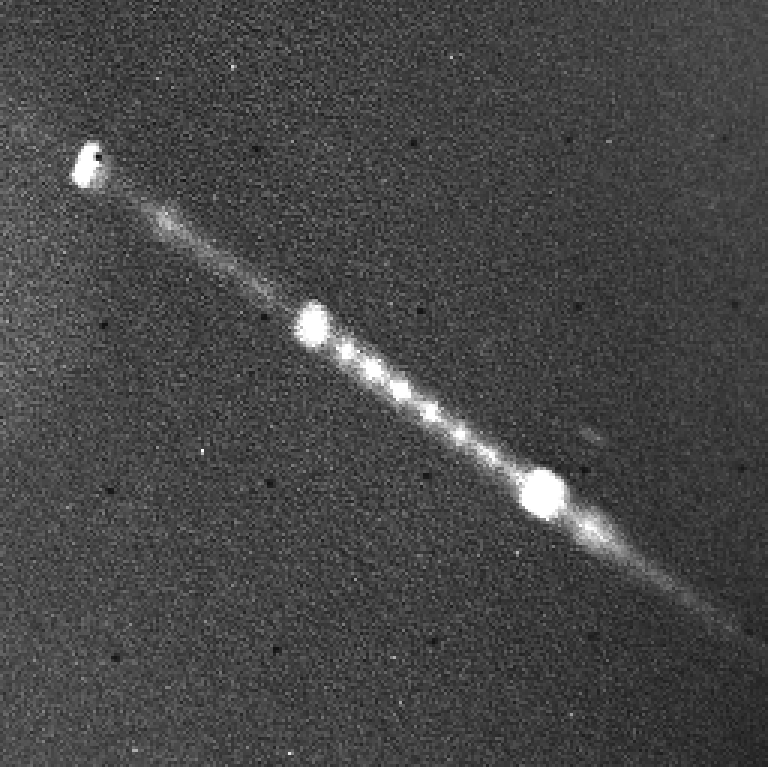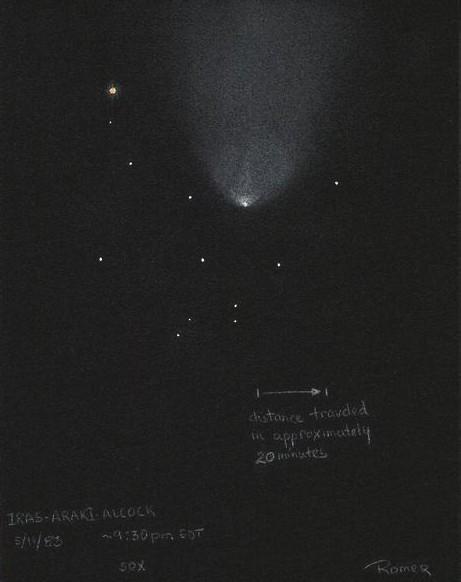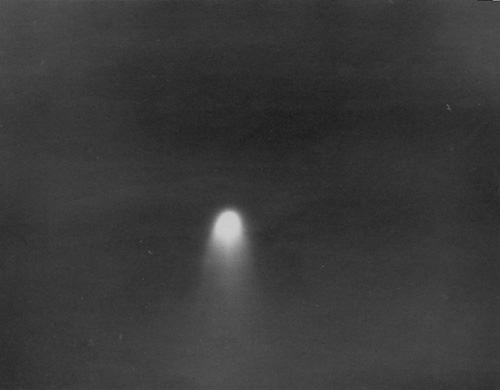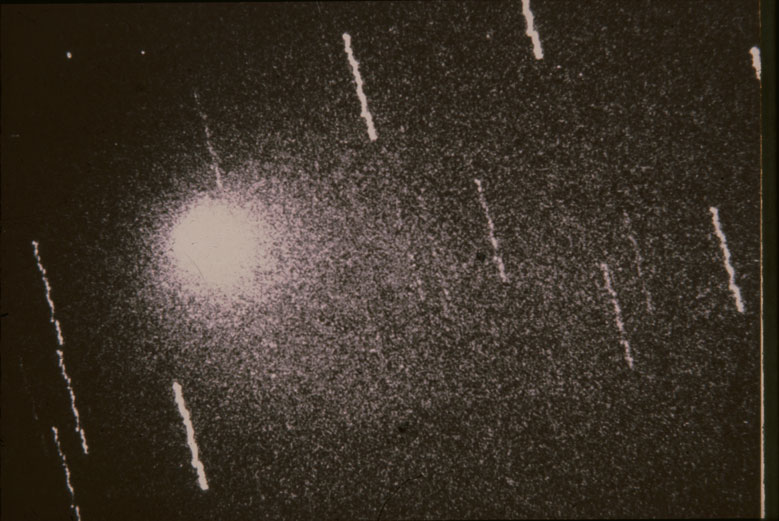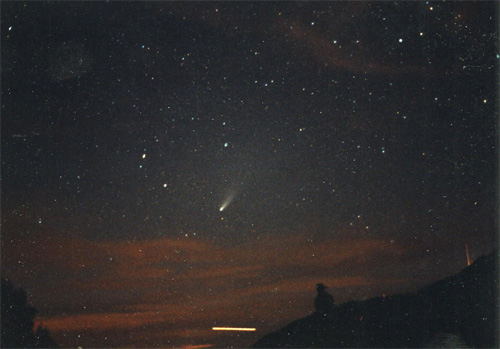Comet IRAS–Araki–Alcock
Comet IRAS - Araki - Alcock (formal designation C/1983 H1, formerly VII 1983 ) is a small comet, which in 1983 approached Earth more ( about 5,000,000 miles) than any other comet in the last 200 years; only Lexells comet, in 1770, and 55P/Tempel-Tuttle, in 1366, the Earth came closer.
The comet was named after its discoverers - the Infrared Astronomical Satellite and two amateur astronomers: the highly respected George Alcock from the United Kingdom and Genichi Araki from Japan (both men were teachers by profession, Alcock was retired). Alcock had just made his discovery by observing through the window of his house with binoculars.
During the closest approach of the comet, he appeared as a circular cloud about the size of the full moon, with no apparent tail and to the naked eye with an apparent magnitude 3-4 may be visible under dark skies. He moved with the high speed of about 30 degrees per day across the sky.
The comet is long periodically with an orbital period of around 964 years. IRAS - Araki - Alcock is the parent comet, which causes the small meteor shower Eta Lyrids. The radiant of this meteor shower is located between the constellations Lyra and Cygnus, it delivers mid-May of each year 1 to 2 meteors per hour with a maximum between 9 and May 11



